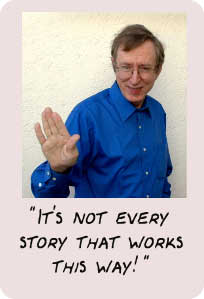|
|
Katalina Groh, Larry Prusak: Some of the world's leading thinkers |
| Storytelling to ignite change: Steve Denning |
 |
Which
stories work like this?
Do all stories work this way? No,
they don’t. The stories that worked for us all had a very similar pattern.
|
| an oil driller. If it was a sales organization,
it would be a salesman. Someone who everyone in that organization can instantly
understand, empathize with, resonate with their dilemma, and understand
what that person was going through.
The story needs to have a certain strangeness or incongruity. It needs to be somewhat odd. That’s remarkable that you could get an answer to a question like that in such a short time frame. Within forty-eight hours even though you’re in Pakistan. But, it’s plausible. It could have happened. The highways community exists. Email exists. The web exists. Yes, indeed, this could have happened in the way that the story is being told. And the story needs to embody the change idea as fully as possible. If you have followed the Pakistan story, you have experienced the main elements of knowledge sharing in the World Bank. You have seen the full gamut of the idea. The story should be as recent as possible. Fresh is better. “This happened last week” conveys a sense of urgency. Older stories can also work, but fresh is better. |
| Books and videos on storytelling *** In Good Company : How Social Capital Makes Organizations Work by Don Cohen, Laurence Prusak (February 2001) Harvard Business School Press *** The Social Life of Information, by John Seely Brown, Paul Duguid (February 2000) Harvard Business School Press *** The Springboard : How Storytelling Ignites Action in Knowledge-Era Organizations by Stephen Denning (October 2000) Butterworth-Heinemann *** The Art of Possibility, a video with Ben and Ros Zander : Groh Publications (February 2001) |
| The views expressed on this website are those of Stephen Denning, and not necessarily those of any person or organization |
| Site optimized in 800x600: webmaster CR WEB CONSULTING |
|
|
|
|